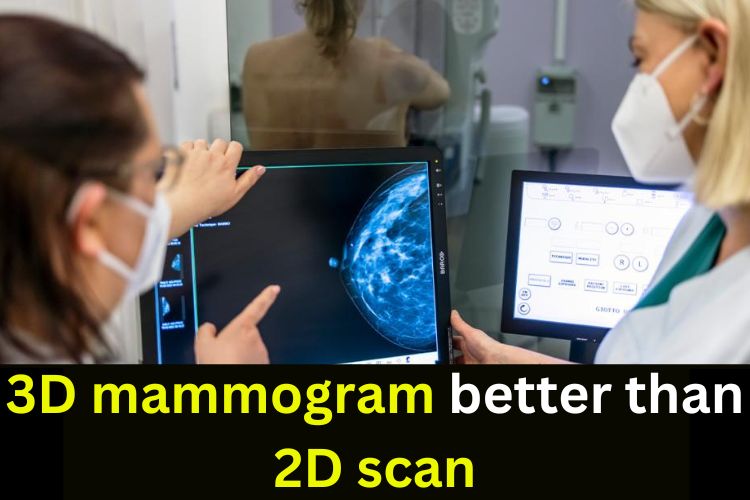3D mammogram has been found to be better than 2D scan for screening to detect breast cancer.
Breast cancer is one of the most common types of cancer among women and according to the American Cancer Society breast cancer has been classified into 3 stages.

Breast
cancer is one of the most common types of cancer among women and according to
the American Cancer Society breast cancer has been classified into 3 stages:
localized- cancer has not spread outside of the breast, regional- cancer has
spread outside the breast to nearby structures and distant- cancer has spread
to distant parts and other organs of the body. The 5 year survival rate for
breast cancer if detected early in localized stage is 99%, when cancer is in
regional stage it becomes 86% and becomes 30% in distant stage.
Right
now the standard of care for screening is a 2D digital mammography that can
detect 87% of breast cancers which means that 1 in 8 cases may not get
detected. Digital breast tomosynthesis (DBT) also known as 3D mammogram is a
newer screening technology which captures x-ray images from multiple angles
that will show 3D images of breast tissue. Researches have shown that DBT has
caused 21% increase in cancer detection compared to mammography. This has shown
good results particularly for younger women and ones with dense cancer.
Dr
Jennifer Chen, lead breast imager at City of Hope Orange County Lennar
Foundation Cancer Center in Irvine, California, not involved in the study
stated “DBT generates three-dimensional images of the breast, allowing
physicians to see the breast from more angles and in greater detail. 3D imaging
is especially recommended for women with dense breasts because traditional
two-dimensional often cannot produce a clear image when high-density tissue is
present.” Dr Chen when asked about its limitations stated “a limitation of the study
is that it is retrospective and observational. The researchers used data from
women screened with 2D during an earlier period and compared it to those
screened with 3D more recently, which means there is not an absolute comparison
of the same cohort.” She also stated that 2D was lacking in important patient
characteristics and there could have been selection bias and characteristics of
detected cancers were not evaluated and long-term outcomes for 3D patients were
not studied hence further research is important on the long-term benefits of
3D.







